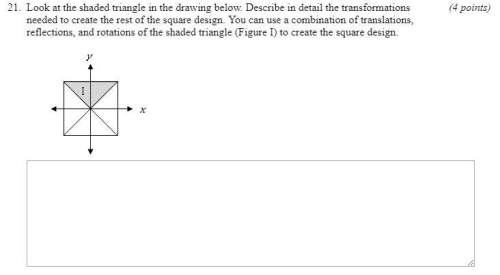
Mathematics, 05.02.2021 21:20 sonnyboi2305
Suppose that we want to generate a random variable X that is equally likely to be either 0 or 1, and that all we have at our disposal is a biased coin that, when flipped, lands on heads with some (unknown) probability p. Consider the following procedure:
1. Flip the coin, and let 21, either heads or tails, be the result.
2. Flip the coin again, and let Z2 be the result.
3. If Z and Z, are the same, return to step 1.
4. If Z, is heads, set X = 0, otherwise set X = 1.
a) Let I, and I be independent indicator variables with success probability p. Compute P(11 = 1|11 # 12)
b) Show that the random variable X generated by this procedure is equally likely to be either 0 or 1.
c) Could we use a simpler procedure that continues to flip the coin until the last two flips are different, and then sets X = 0 if the final flip is a head, and sets X = 1 if it is a tail?
PROBLEM 4.7
Implement the algorithm described in the previous problem in R and use it to generate 10 standard uniformly distributed variables.

Answers: 3
Another question on Mathematics

Mathematics, 21.06.2019 17:30
Adozen bananas weigh 3 pounds how many ounces does 1 banana weigh
Answers: 1

Mathematics, 21.06.2019 19:20
Which number completes the system of linear inequalities represented by the graph? y> 2x – 2 and x + 4y 2 et 2 3 4
Answers: 3

Mathematics, 21.06.2019 20:00
Pepe and leo deposits money into their savings account at the end of the month the table shows the account balances. if there pattern of savings continue and neither earns interest nor withdraw any of the money , how will the balance compare after a very long time ?
Answers: 1

Mathematics, 21.06.2019 21:00
Which spreadsheet would be used to compute the first nine terms of the geometric sequence a^n=32•(1/2)n-1
Answers: 3
You know the right answer?
Suppose that we want to generate a random variable X that is equally likely to be either 0 or 1, and...
Questions





Biology, 23.05.2020 20:00


English, 23.05.2020 20:00





Mathematics, 23.05.2020 20:00


Mathematics, 23.05.2020 20:00

Chemistry, 23.05.2020 20:00


English, 23.05.2020 20:00

Mathematics, 23.05.2020 20:00





